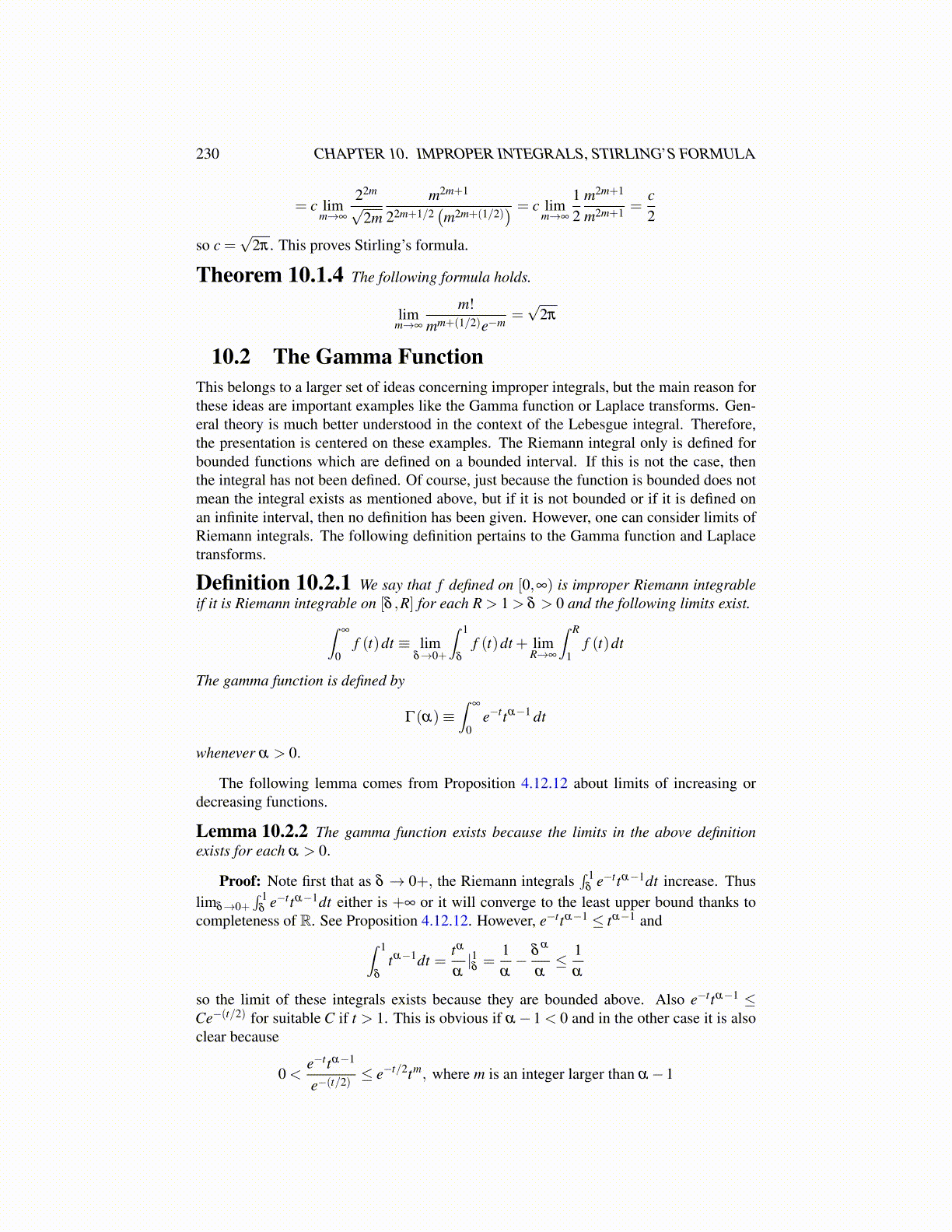
230 CHAPTER 10. IMPROPER INTEGRALS, STIRLING’S FORMULA
= c limm→∞
22m√
2mm2m+1
22m+1/2(m2m+(1/2)
) = c limm→∞
12
m2m+1
m2m+1 =c2
so c =√
2π . This proves Stirling’s formula.
Theorem 10.1.4 The following formula holds.
limm→∞
m!mm+(1/2)e−m
=√
2π
10.2 The Gamma FunctionThis belongs to a larger set of ideas concerning improper integrals, but the main reason forthese ideas are important examples like the Gamma function or Laplace transforms. Gen-eral theory is much better understood in the context of the Lebesgue integral. Therefore,the presentation is centered on these examples. The Riemann integral only is defined forbounded functions which are defined on a bounded interval. If this is not the case, thenthe integral has not been defined. Of course, just because the function is bounded does notmean the integral exists as mentioned above, but if it is not bounded or if it is defined onan infinite interval, then no definition has been given. However, one can consider limits ofRiemann integrals. The following definition pertains to the Gamma function and Laplacetransforms.
Definition 10.2.1 We say that f defined on [0,∞) is improper Riemann integrableif it is Riemann integrable on [δ ,R] for each R > 1 > δ > 0 and the following limits exist.∫
∞
0f (t)dt ≡ lim
δ→0+
∫ 1
δ
f (t)dt + limR→∞
∫ R
1f (t)dt
The gamma function is defined by
Γ(α)≡∫
∞
0e−ttα−1 dt
whenever α > 0.
The following lemma comes from Proposition 4.12.12 about limits of increasing ordecreasing functions.
Lemma 10.2.2 The gamma function exists because the limits in the above definitionexists for each α > 0.
Proof: Note first that as δ → 0+, the Riemann integrals∫ 1
δe−ttα−1dt increase. Thus
limδ→0+∫ 1
δe−ttα−1dt either is +∞ or it will converge to the least upper bound thanks to
completeness of R. See Proposition 4.12.12. However, e−ttα−1 ≤ tα−1 and∫ 1
δ
tα−1dt =tα
α|1δ=
1α− δ
α
α≤ 1
α
so the limit of these integrals exists because they are bounded above. Also e−ttα−1 ≤Ce−(t/2) for suitable C if t > 1. This is obvious if α −1 < 0 and in the other case it is alsoclear because
0 <e−ttα−1
e−(t/2) ≤ e−t/2tm, where m is an integer larger than α −1